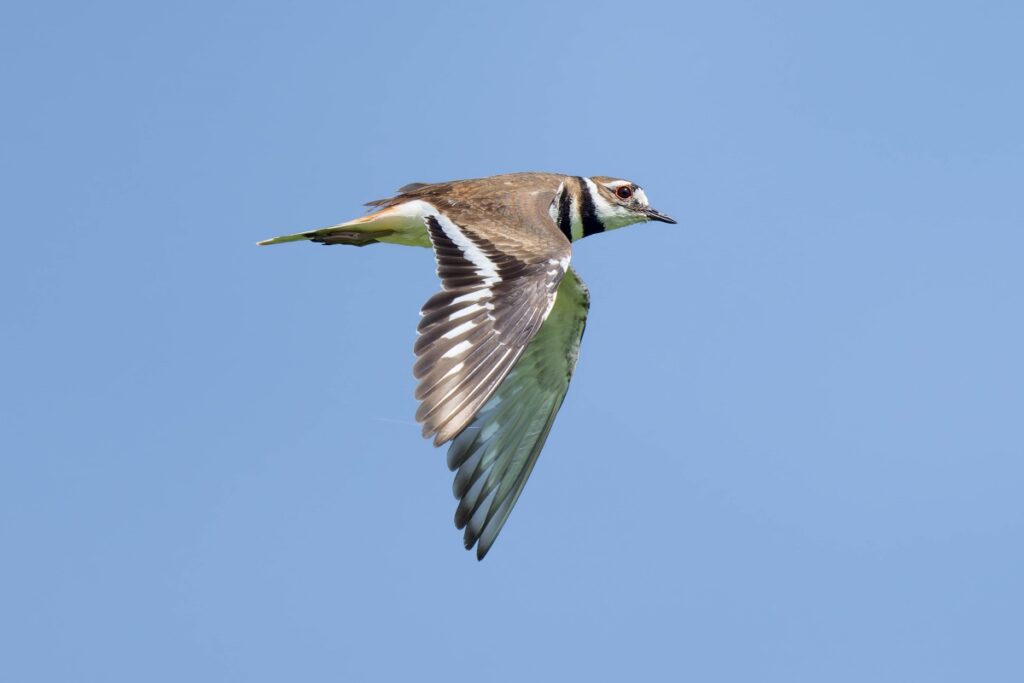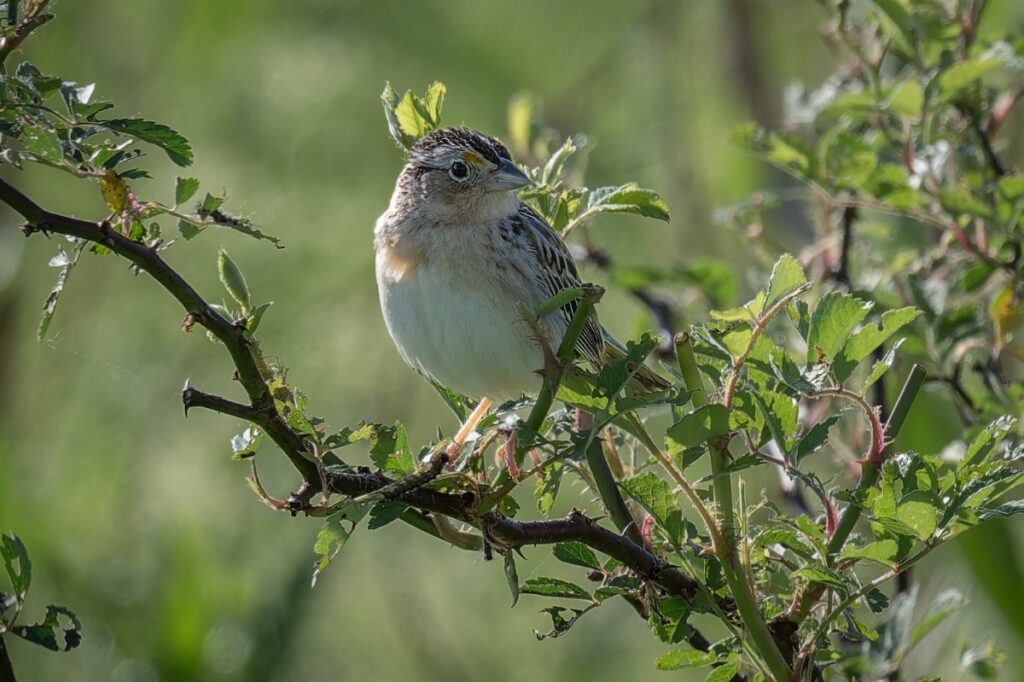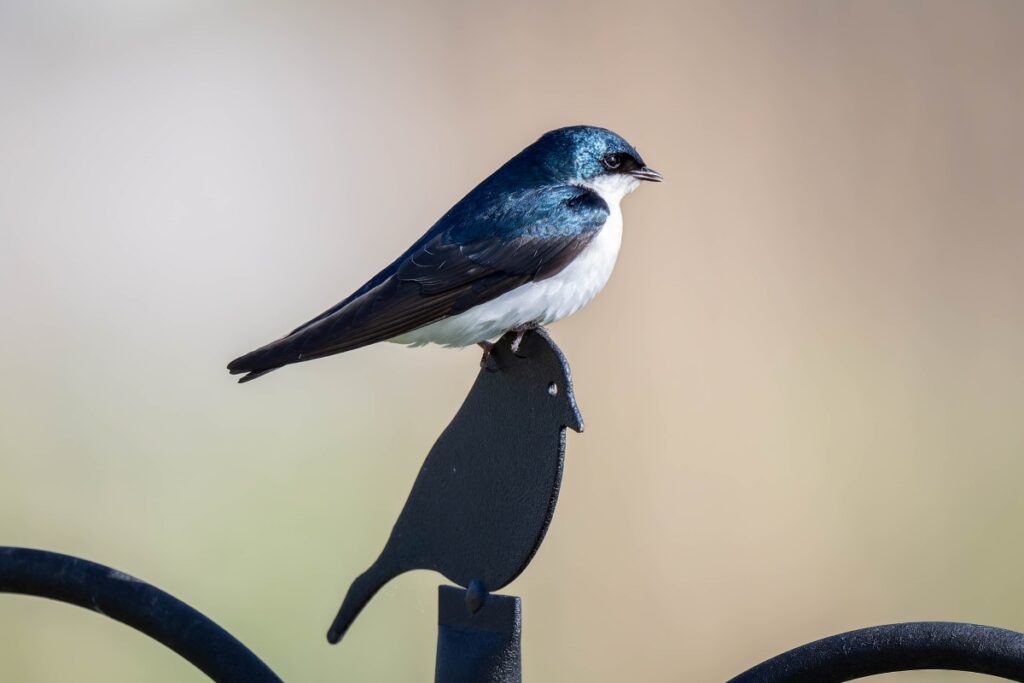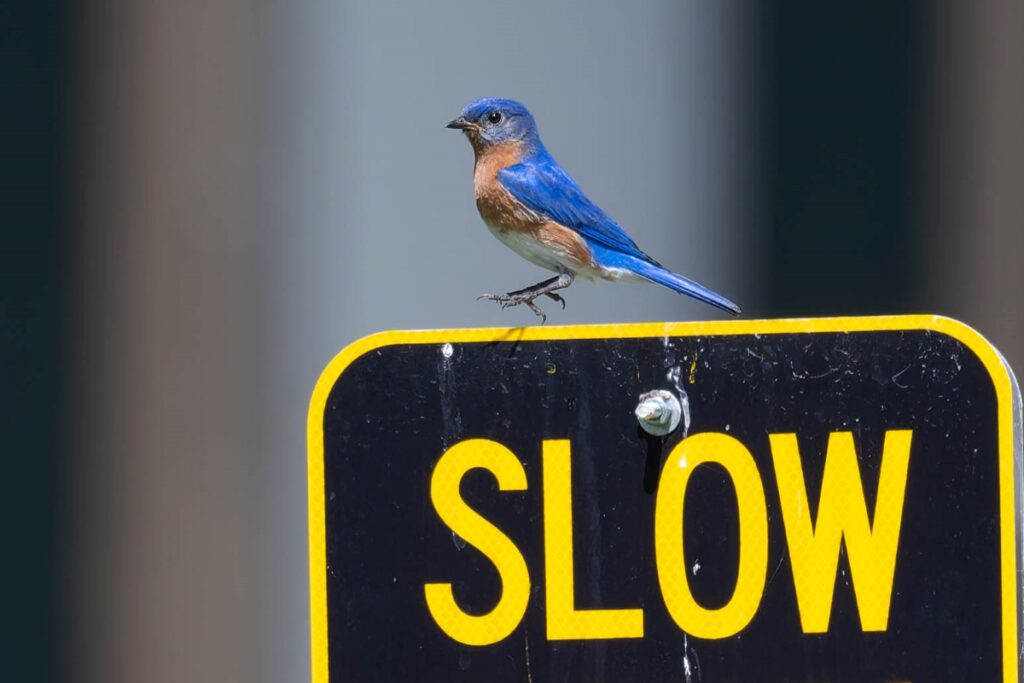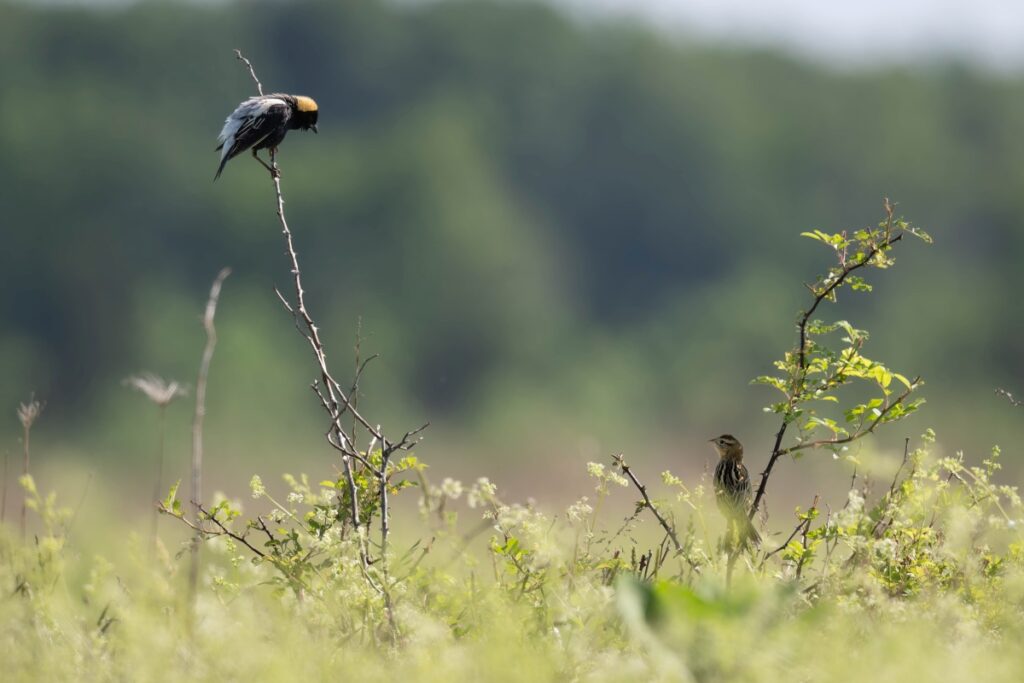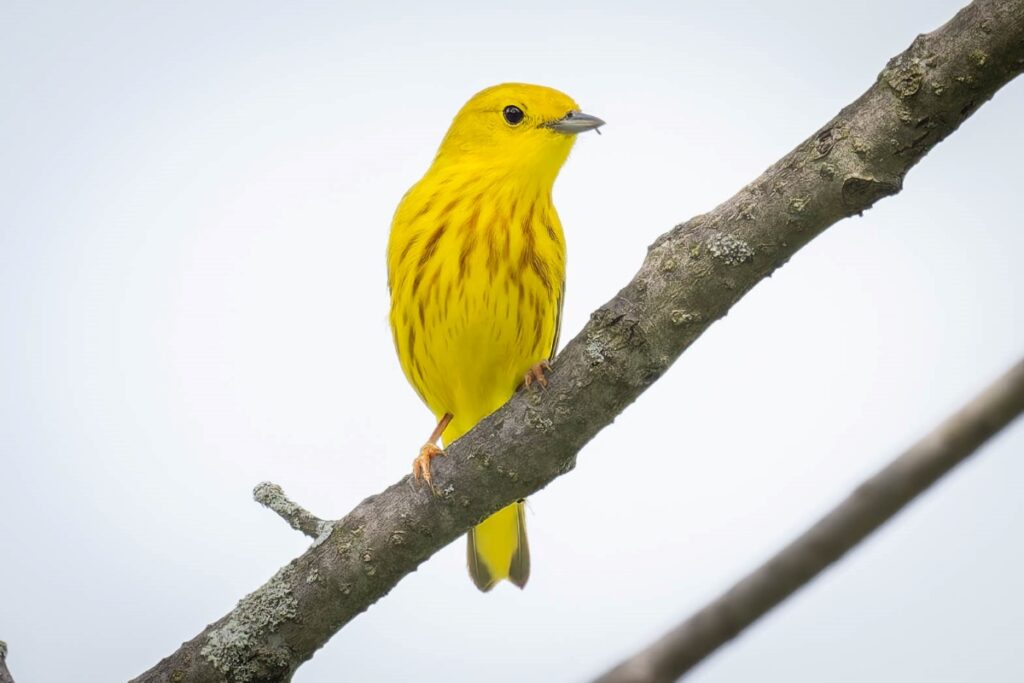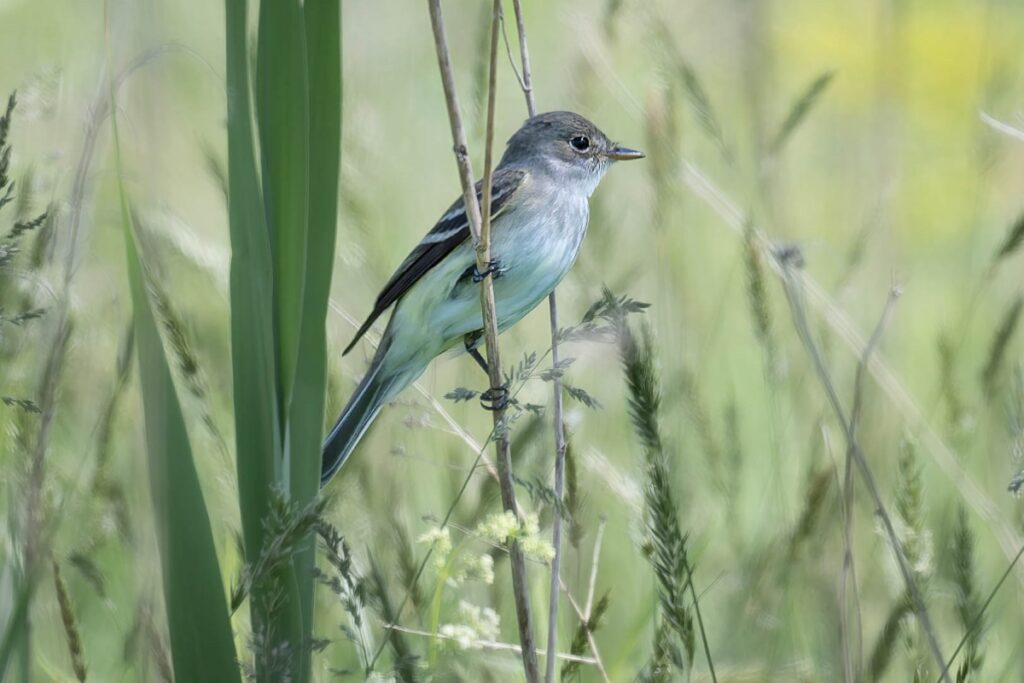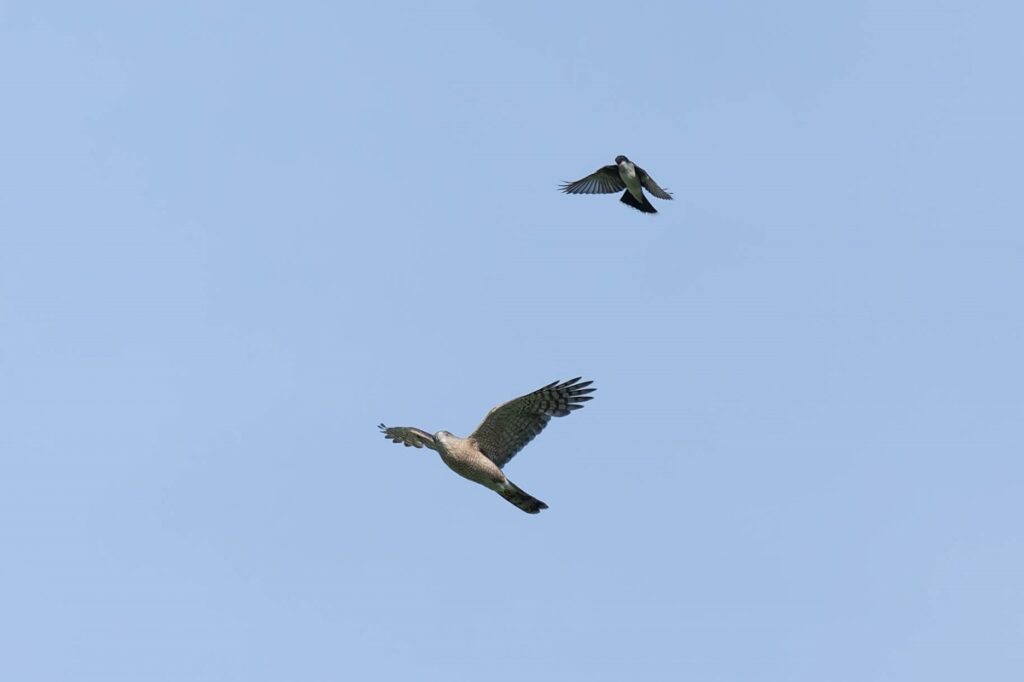Leader: Tod Winston
Registrar: Mary Beth Kooper
Participants: 15
Weather: 58 – 74°F, Light NE – N breeze
Bird Species: 72
Report by: Tod Winston
All in all, this was a very productive, birdy day as we explored grasslands, woodland edges, and wetlands. At Shawangunk Grasslands National Wildlife Refuge, nesting Purple Martins and Tree Swallows couldn’t be missed even from the parking lot, and several of our target grassland birds jumped out at us from the get–go: Bobolink males sang their electronic jingle in display flights over the fields, while Grasshopper Sparrows gave us two versions of their song and one of them—very cooperative—perched right in front of us, giving good looks from the viewing platform. The sweet, lilting song of Eastern Meadowlarks could also be heard, and, eventually, several birds sat for us in plain view. Our trek along the refuge trail also netted us nesting Eastern Bluebird, Yellow Warbler, Willow Flycatcher, and a particularly nice view of a Brown Thrasher, singing his double phrases from atop a tree. Yellow-billed Cuckoo (heard in the background) and nesting American Kestrel (seen) also made their presence known, and at one point a raucous mob of angry martins pursued an adult accipiter across the fields, as shown in the excellent photos that Dom has shared. (For more on that accipiter, see the “Troublesome Molting Raptors” section below.)
Thankfully, birds continued to sing all morning long, which helped us locate a different assortment of species as we explored the woods and pond along the refuge entranceway. We got better views of several Willow Flycatchers; a nervous mother bluebird patiently awaited our departure; and American Redstart and Blue-winged Warbler also made vocal appearances, though the latter bird was not very cooperative. A White-breasted Nuthatch, strangely rare this year in NYC, also made a cameo, as did a Wood Thrush—which sang from high atop a dead tree branch, sporting a surprisingly bright shade of orange-brown in the sun. Along the trail we also encountered several “banjo-playing” Green Frogs and a healthy-looking groundhog, a.k.a. woodchuck.
Several more raptors floated by before we departed: a few Red-tailed Hawks, both vulture species, what appeared to be a nearly adult-plumaged Bald Eagle (sporting some brownish edging to its tail feathers), and a molting, immature hawk, also captured digitally by Dom. (Once again, I refer you to the “Troublesome Molting Raptors” section, below!)
Following a much needed rest and lunch in the gazebo, a quick drive through Blue Chip farm didn’t give us much new, though most of us could detect the slow, repeating tone of the Yellow-billed Cuckoo, echoing from far off in the woods.
Our “bonus” stop at the Liberty Loop/Walkill River NWR supplied a number of different species. An adult Common Gallinule proved a skulky quarry, but eventually all of us got some sort of view—providing a life bird sighting for several in the group. And a female Wood Duck briefly appeared, followed by several ducklings. The primary target for many, however, the Sandhill Crane, proved more elusive. While a few of us heard their trumpeting rattle from far off, we did not manage to set our eyes on the birds this year. We did, however, get nice views of several new-this-year species for the day, including a soaring Osprey, a lovely singing male Orchard Oriole, and an Indigo Bunting.
Troublesome Molting Raptors
Many thanks to Dom for the great shots he shared of two birds of prey that gave us quick looks at the Shawangunks. As it turns out, together they provide a good lesson in the pitfalls of identifying raptors in molt! I’ve shared some thoughts on the two birds below, with some input from several others on the trip, along with feedback from Facebook’s very helpful “Raptor ID” section.
1) On the grassland trail, an accipiter shot by with Purple Martins in hot pursuit. The bird’s quick flapping and somewhat short tail with a square-ish end led me to call it a large female Sharp-shinned Hawk. However, Dom’s photos reveal a very dark, distinct cap coupled with a light orange nape, as well as a fairly large head and bill and correspondingly small eye—all of which lead me to change the ID to Cooper’s Hawk. Some discussion with raptor nerds (in the best sense), made it seem likely that this bird, which appears to be molting some primaries, has also molted (lost) its inner, longer tail feathers, resulting in a shorter, squarer-looking tail, similar to that of a Sharp-shinned Hawk. (#accipitersareconfusing).
2) Near the pond, a raptor molting some of its primary feathers soared high over us, and though it was hard to see its markings against the light, we could make out symmetrical translucent patches in its primaries. “Red-shouldered Hawk” jumped to the mind of several of us, but the light patches didn’t exactly match the crescent shape one expects for this species. Dom’s photos reveal more details, including thin but distinct tail banding and fairly dense striping on the bird’s underparts. This bird has generated some contradictory discussion in the raptor ID group, with dueling opinions of immature Red-shouldered (RSHA) and Broad-winged Hawk (BWHA). These two species are very similar, particularly during molt, when the immature BWHA (like other buteos, such as Red-tails) can have translucent outer primaries that mimic the light “wing crescents” of the RSHA.
Species List
Canada Goose
Mute Swan
Wood Duck
Mallard
Rock Pigeon
Mourning Dove
Yellow-billed Cuckoo
Common Gallinule
Sandhill Crane
Killdeer
Green Heron
Great Blue Heron
Black Vulture
Turkey Vulture
Osprey
Northern Harrier
Cooper’s Hawk
Bald Eagle
Broad-winged Hawk
Red-tailed Hawk
Red-bellied Woodpecker
Downy Woodpecker
Northern Flicker
American Kestrel
Eastern Wood-Pewee
Willow Flycatcher
Great Crested Flycatcher
Eastern Kingbird
Yellow-throated Video
Warbling Vireo
Red-eyed Vireo
American Crow
Common Raven
Tufted Titmouse
Tree Swallow
Purple Martin
Northern Rough-winged Swallow
Barn Swallow
White-breasted Nuthatch
House Wren
Marsh Wren
Carolina Wren
European Starling
Gray Catbird
Brown Thrasher
Northern Mockingbird
Eastern Bluebird
Wood Thrush
American Robin
Cedar Waxwing
House Sparrow
House Finch
American Goldfinch
Grasshopper Sparrow
Chipping Sparrow
Field Sparrow
Song Sparrow
Eastern Towhee
Bobolink
Eastern Meadowlark
Orchard Oriole
Baltimore Oriole
Red-winged Blackbird
Brown-headed Cowbird
Common Grackle
Blue-winged Warbler
Common Yellowthroat
American Redstart
Yellow Warbler
Northern Cardinal
Indigo Bunting
